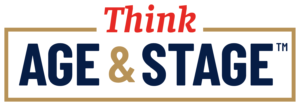
Preschool. Kindergarten. Elementary School. Middle School. High School. These divisions are commonly understood as the sequential progression of learning and development from early years through graduation. Your independent school may use different terminology (i.e., lower school, upper school, etc.) or serve specific segments (i.e., K-8), but the idea is essentially the same.
These well-defined, widely recognized divisions provide structure for how school leaders map out curriculum, develop programming, and scaffold the educational experience. They inform how schools organize teams and clubs, hire faculty and staff, and design campuses. In fact, there’s not much in school life that doesn’t take this progression into account.
While academic divisions have clear implications for teaching and programming, they also hold significant promise for marketing and admissions. There is a direct connection between the stages of educational progression and the interests of prospective families.
Savvy enrollment marketers who explore this concept will find exciting new ways to convey their school’s value proposition by leveraging an opportunity that’s hiding in plain sight.
Prospective Families Use These Divisions, Too
While primarily a construct of the educational system, school divisions also impact how parents search for and evaluate private school options. Take a look at the referring search terms in Google Analytics on your website.
“Private middle school in (city, town, county)”
“Best kindergarten near me”
“Independent high school”
These are examples of specific search terms parents commonly use when looking for education options. They signal what parents are looking for and what’s important to them. Parents want their children to grow, learn, and mature, not just in a specific grade, but in a particular season of life — in a specific Age-and-Stage®.
Retention On-ramps and Off-ramps
School marketers are well aware of the potential for attrition and addition between divisions. Families are more inclined to make a move between Ages-and-Stages® — say, elementary and middle school, for example — not in the middle of a division. It could sound like this:
“We’ll do kindergarten at the public school, but we’ll switch to a private school for elementary.” Or, “Elementary was fine there, but we decided to make a change before our daughter moved on to middle school.” Or, “We love our school, but it only goes to 8th grade. We’re considering independent high school options for our son for next year.”
These natural on-ramps and off-ramps travel both ways, as schools may lose students between certain divisions and gain students between others. Neglecting this reality can result in lumpiness between levels and bleak outlooks for specific divisions.
Age-and-Stage® Marketing: a Missed Opportunity
Despite clear interest in Ages-and-Stages® from prospective families, many schools have not aligned their marketing strategies with the academic progression of divisions. Rather than helping parents appreciate the unique opportunities for their child in a specific phase of development, school messaging either stays general and high-level or, at the other end of the spectrum, gets bogged down in the nitty-gritty of a specific grade.
What’s lost in the murky middle is the opportunity to help prospective families understand how the school helps each child develop the skills they need to succeed in their current Age-and-Stage® while being prepared for what comes next. Failing to make this connection is a significant missed opportunity.
One-Size-Does-NOT-Fit-All
Imagine that tomorrow morning you have a tour with the parent of an incoming freshman, and in the afternoon, you’re meeting with a parent of an incoming kindergartener. Even though they’re both considering the same school, their starting points, pain points, and talking points are miles apart. You know this because you’ve worked with these families.
But the reality is most schools have not given significant thought to how these conversations should be different. Yes, the questions parents ask upfront will be different, but there is little structure in place for the school representative to intentionally guide the conversation toward specific aspects of the divisional experience. In fact, at many schools, both families would walk out with copies of the same brochure.
As you move the conversation toward Age-and-Stage®, you sell families not just on a positive culture or the merits of a specific grade but on what’s possible in a specific season of learning and growth.
You show them how your school is uniquely designed to help their child learn and mature; you position your school as the expert they need to guide them through a vital season of development.
What they hear from you will be refreshingly different from what they’ve seen and heard at other schools. Your message and approach will align with the envisioned future they have for their child, giving them the assurance they need to move forward.
How To Implement Age-and-Stage® Thinking
Once you begin to see your marketing and admissions efforts through the lens of Age-and-Stage®, you won’t go back to broad generalizations. But implementing these concepts takes time and commitment; it’s a march, not a sprint. Here’s a high-level overview of the implementation process.
1.
Start with clear messaging.
You need to have collaborative conversations with key stakeholders from each division your school serves. This will likely take several meetings to work through, but it is important to include leaders and teachers in these Age-and-Stage® conversations.
Ask the following questions:
- Who is our right-fit family for this Age-and-Stage®?
- What are we selling to them?
- What is our right-fit family’s level of familiarity with this Age-and-Stage®?
- What significant attitudes and opinions do they hold about this Age-and-Stage®?
- What do they need to believe to apply and enroll at our school?
Learn more about North Star Marketing’s Message Workshops.
2.
Embed Age-and-Stage® divisions into the homepage of your website.
Hill Country Christian School in Austin, TX, is a strong example of this concept. Note how the Age-and-Stage® zones on the homepage connect to deeper content with calls-to-action and downloadable offers.
3.
Segment your print collateral by Age-and-Stage®.
A whole-school overview is helpful, but developing Age-and-Stage® print collateral can guide prospective families through the value proposition of each division. These pieces will convey more signal and less noise for parents and students.
4.
Organize your digital marketing campaigns by Age-and-Stage®.
This includes developing specific ads, landing pages, and content offers organized by division. As you go deeper into divisional marketing, you can dial up and dial down campaigns based on where you need to see an increase in enrollment.
5.
Integrate Age-and-Stage® into your tours and open houses.
In-person conversations and presentations are high-impact settings for division-level selling. Huddle up with your marketing and admissions team to consider how you can integrate Age-and-Stage® concepts into tours, open houses, and community presentations.
The Long-term Rewards of Age-and-Stage® Thinking
No parent (or guardian) wants to make a school decision one year at a time. They want to make an informed decision and enroll their child in a school that will take them as far as they can go — in most cases, through graduation.
By showing them what’s possible in the relevant Age-and-Stage, you establish trust by removing risk in their decision. You help them understand how your school can give their child what they need in this development season and prepare them well for what’s next.
And as well-informed right-fit families apply and enroll, they tell others about their positive experience. And you’ll have more opportunities to tell right-fit families about the promising opportunities in store for them at your school. The long-term result? Healthy enrollment in every Age-and-Stage®.
Looking for more opportunities to tell right-fit families about the experiences in store for them in each Age-and-Stage® at your school?




